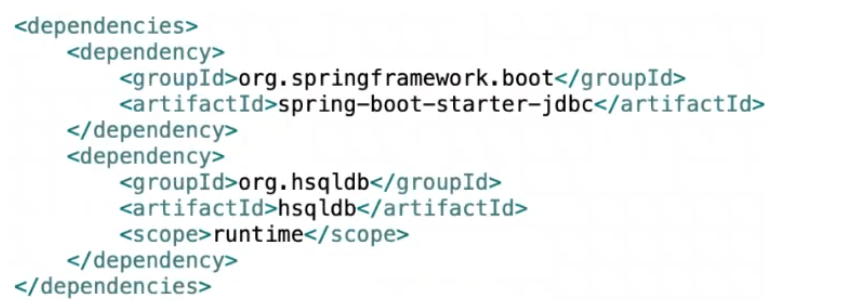VMware 2V0-72.22 - Professional Develop VMware Spring
Refer to the exhibit.
It is a Java code fragment from a Spring application. Which statement is true with regard to the above example? (Choose the best answer.)
Which two statements are true about Spring Boot and Spring Data JPA? (Choose two.)
Which two statements are correct when @SpringBootApplication is annotated on a class? (Choose two.)
Which two statements are true regarding Spring Security? (Choose two.)
Refer to the exhibit.

Which two statements are correct regarding auto-configuration of DataSource and JdbcTemplate beans given a Spring Boot application with only these two dependencies? (Choose two.)
Which statement describes the @AfterReturning advice type? (Choose the best answer.)
Spring puts each bean instance in a scope. What is the default scope? (Choose the best answer.)
Which two statements are true concerning the BeanPostProcessor Extension point? (Choose two.)
Which two statements are true regarding Spring Boot Testing? (Choose two.)
Which two statements are correct regarding Spring Boot 2.x Actuator Metrics? (Choose two.)



